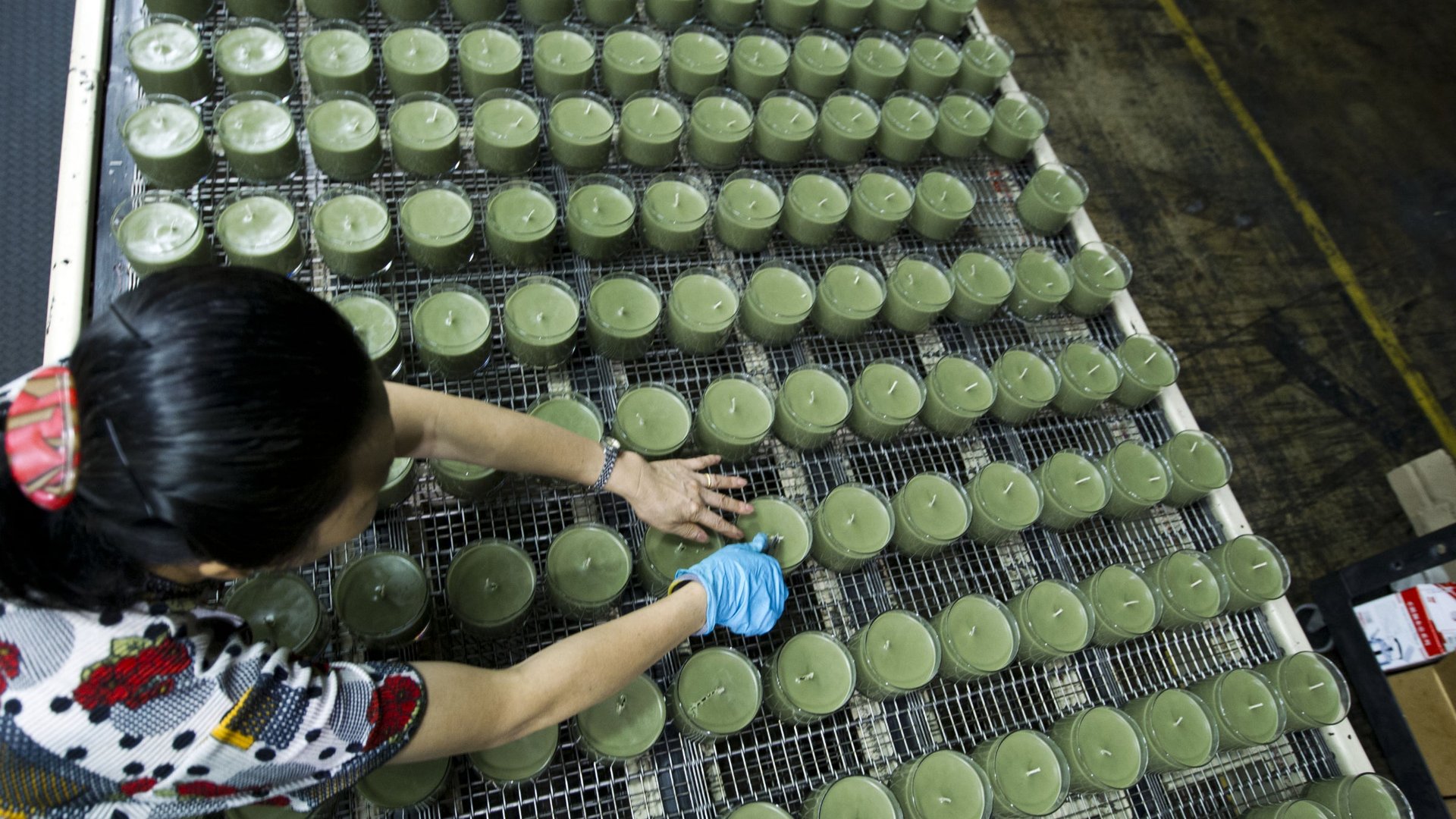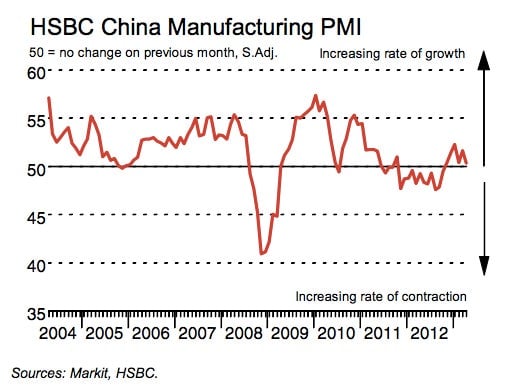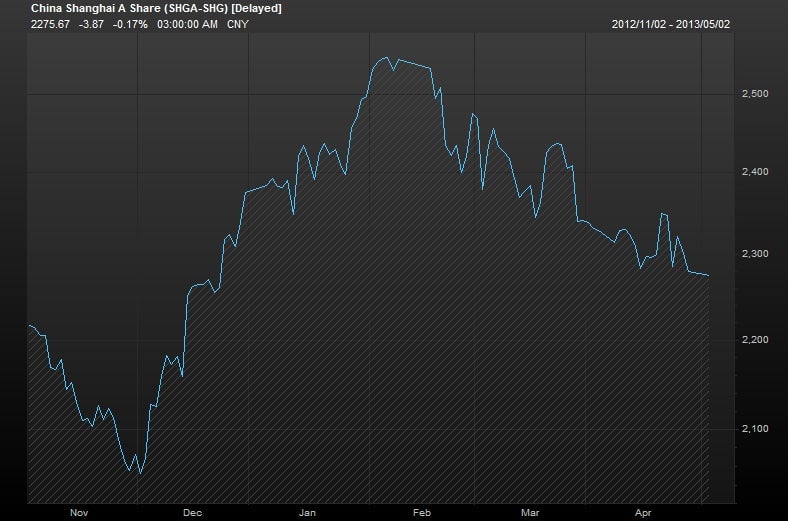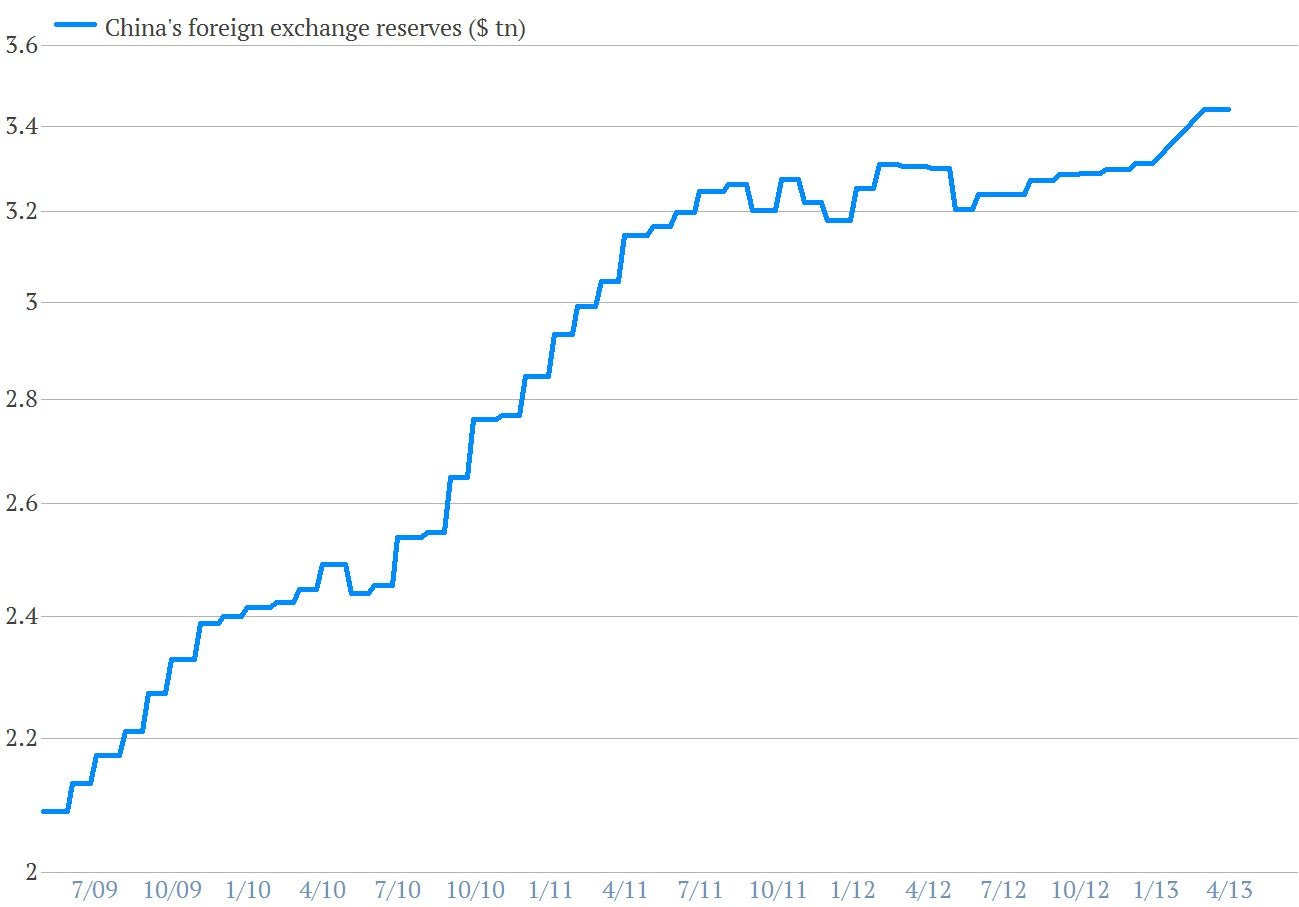Currency speculators are making China’s sinking exports an even bigger problem
China’s looking increasingly shaky. Yesterday’s manufacturing data showed that new export orders are shrinking. The purchasing managers’ index out today from HSBC and Markit confirmed the drop. Today’s data also reveal sharply falling input prices, hinting that overcapacity continues to dog China’s manufacturing sector:


China’s looking increasingly shaky. Yesterday’s manufacturing data showed that new export orders are shrinking. The purchasing managers’ index out today from HSBC and Markit confirmed the drop. Today’s data also reveal sharply falling input prices, hinting that overcapacity continues to dog China’s manufacturing sector:

China’s Q2 looks on track to underperform Q1—and we all know how lousy that was (in case you forgot: GDP came in at an unexpectedly low 7.7%).
But if China’s economy is weakening, why did $101.8 billion flow into the country in the first quarter?
Foreign capital typically seeps into a country when its economy is looking promising. It tends to leave a country when risk is too great or return on investment is too scarce. That’s why the $31.8 billion in net capital that exited China in Q4—and the $117.3 billion flowed out of China in all of 2012—were read as a waning of confidence in China’s economy.
One thing’s likely: that $101.8 billion inflow didn’t come in search of superior investment opportunities. The quality of infrastructure projects has deteriorated, and the property market faces constant threat of government tightening. And, per usual, Chinese stocks are uninviting:

What’s more, Chinese people seem to agree that there’s little worth investing in. Domestic foreign currency deposits were up $35 billion in Q1, compared with last quarter, wrote Lombard Street Research in a recent note.
And yet, in flows the capital.
This isn’t exactly a mystery. It’s hot money.” Here’s how it works: to keep its exports cheap, China’s central bank offers to pay more yuan than the market rate—6.2 yuan per each dollar, when the market only demands, say, 5.9 per dollar. This guarantees investors a tidy return when the government eventually lets the yuan reach fair-market value, which it has to do to open up its capital account and modernize its financial sector.
There’s not much the People’s Bank of China can do about hot money. If it opts to keep its exchange rate steady, that requires buying dollars (which we’ll use as a stand-in for all foreign currency). That means pumping more yuan into the system, which could drive up prices. It can raise reserve requirements or use repo operations to drain that liquidity. But that effectively boosts return on yuan holdings, which will attract still more yield-chasing capital. Plus, that risks choking off credit needed to keep up growth.
The PBOC could conceivably stop manipulating the exchange rate by declining to buy dollars. But that would almost certainly let the yuan strengthen, adding to that deflationary pressure showing up in the PMI data, and, more importantly, hurting the competitiveness of its exports. And as the data signal, the state of China’s exports is too precarious to mess with.
The PBOC’s clearly already worried about that. It added $128 billion to its foreign exchange reserves in Q1. After two years of accumulating hardly any foreign reserves, that sharp uptick shows how frantically the PBOC has bought dollars to stem the yuan’s appreciation:

But even with those efforts underway, the yuan still strengthened throughout last quarter:

It’s a vicious cycle. The PBOC props up its exports, attracting capital inflows, which in turn pressures the yuan … making the government have to amass even more foreign currency just to keep the yuan stable.